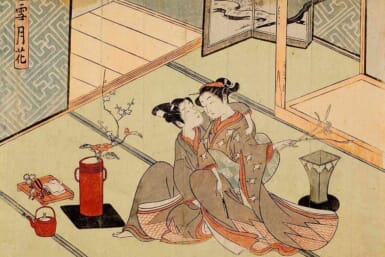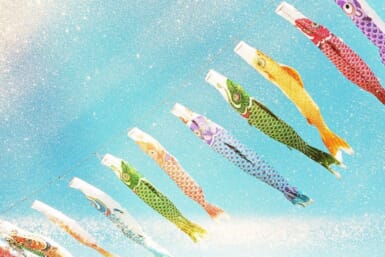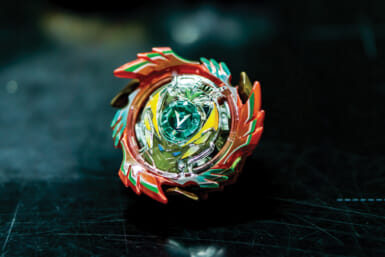Inspired by a thread in the TW Book Club Goodreads page, we decided to embark on an adventure into the world of Japanese bookish lingo. Whether you’re brushing up your Japanese skills or looking for some cerebral stimulation, this list will help you start a new chapter in your reading life.
1. Dokushoka (読書家)
Probably the most common term to mean an avid reader or bibliophile, dokushoka is one step above 読者/ dokusha in reading enthusiasm and frequency. Similar expressions include 読み手/yomite and 愛書家/aishoka, but these are not used as much. Instead, saying you enjoy reading 読書が好き/dokusho ga suki or that reading is your hobby 読書は趣味です/ dokusho wa shumi desu.
2. Ichidokusha (一読者)
Ichidokusha simply means “a reader” but readers of Japanese will encounter the expression in literary essays, reviews and more. Often used as the set expression 一読者として/ ichidokusha toshite, it precedes an opinion about a certain text. When used on its own, it means just a reader or someone who reads a lot, as opposed to a novelist or writing professional.
3. Hon no Mushi (本の虫)
Hon no mushi is very close to its English equivalent, the bookworm. The origin of its literal meaning of “book bug” comes from the シミモク/ shimimoku, an oriental silverfish known for its love of books. In the silverfish’s case, however, it enjoys physically devouring the pages until they turn into dust. Interestingly, the word 紙魚/ shimi on its own is a condescending expression for someone who is unable to apply what they’ve read, or remember their studies.
4. Katsuji Chudokusha (活字中毒者)
A katsuji chudokusha is next-level bookworm who is addicted to the printed word. It borders on an excessive fondness for reading — to the extent that it causes issues in daily life. If you’re too busy reading to pay your bills on time, you may be a katsuji chudokusha.
5. Shochi (書痴)
While shochi essentially means being a fool for books, it’s on the extreme end of the book nut scale. It’s essentially someone who does nothing but read books and is ignorant of the world. The closest English equivalent would be a Poindexter — a studious but socially inept person. Since it has a strong derogatory connotation, it’s best to only use this to describe yourself and not another person.
6. Tsundoku (積読, sometimes 積ん読)
The bane of every reader, tsundoku is that constant reminder that we have perhaps bought more books than we can realistically read in our lifetime. Some of us (me, in particular) argue that book buying is a separate hobby from book reading and thus the we can keep the guilt at bay. For a more in-depth look into the curse of tsundoku and its meaning, read this.
7. Sokudoku (速読)
Simply put, sokudoku is speed reading. Most Japanese people read at an average of 400-600 characters per minute, which the English average comes in at a paltry 250 words per minute. If you want to check your reading speed in Japanese, visit Hakaru-kun, which can assess your skills reading anything from texts aimed at elementary school kids and up.
8. Heiko Dokusho (並行読書)
Heiko Dokusho is reading multiple books at a time. While this method can contribute to semi-read tsundoku piles, reading something is better than nothing and research says that reading books in parallel is said to help people read more widely and improve their focus. Whether you’re a fan of switching books midway or not, some stories (like Earthlings) may require the brain version of a palate cleanser before finishing.
9. Kikobonkyo (稀覯本狂)
A kikobonkyo is a person who collects rare and antique books. Fans of kikobon (稀覯本/rare books) will scour the bookstores in Jimbocho for special editions and hidden gems. It’s a great area to enjoy a cup of coffee while you read, too.
Know What You’re Reading: Bonus Japanese Book Jargon
Not sure how to describe what kind of book you’re looking for in Japanese? Here’s a quick cheat sheet to some of the most common genres and book types to help you out when you’re browsing bookstores for new books to add to your pile.
文庫本/ Bunko hon: The most common standardized book size in Japan. It’s a pocket-sized paperback book, which comes in a handy A6 (10.5cm x 14.8cm) format.
大衆文学/ Taishu bungaku: Popular literature; books designed to entertain.
児童小説/ Jido shosetsu: Novels for children up to the age of 12. The English equivalent would be middle-grade fiction.
ライトノベル/ Light novel: Fiction aimed at young teens (middle- and high-school-aged kids), similar to YA (young adult) literature in English. Light novels have shorter chapters than standard fiction books and often include illustrations.
青春小説/ Seishun shosetsu: Another genre within the YA umbrella, as the protagonists are often dealing with growing pains of various kinds. Common themes are coming-of-age experiences and romantic encounters.
ノンフィクション/ Non-fiction: Same as in English: real-life stories, factual and educational texts. One of the most common subgenres is the エッセイ/ essay, an autobiographical retelling of events or diary-style ponderings.
異世界/ Isekai: Literally meaning “another world”, isekai is a fantasy subgenre often featured in light novels and manga. Broader terms include ファンタジー小説 / fantasy shosetsu and 幻想文学 / genso bungaku.
ミステリー/ Mystery: As in English, it includes “whodunnit” murder mysteries as well as psychological thrillers.
時代小説/ Jidai shosetsu: Historical or period fiction, also known as 歴史小説/ rekishi shosetsu.
伝奇小説/Denki shosetsu: A literary fiction genre that originated in Tang and Song Dynasty China and consisted of short stories, often based on Legends. Ryunosuke Akutagawa’s work “Toshishun” is said to be influenced by a Chinese folk story, and would fall under this genre.
恋愛小説/ Renai shosetsu: Romance novels and love stories. These books are also referred to as ロマンス/romance.
官能小説/ Kannou shosetsu: Erotic novels ranging from slightly steamy to explicit and pornographic.
Want more bookish recommendations? Check out these articles:
The Books Behind Your Favorite Japanese Films
Japan Books: 20 New and Upcoming Releases We Can’t Wait to Read in 2022









